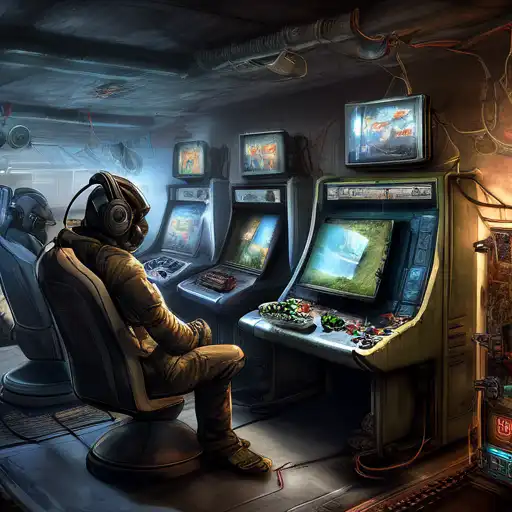The Dawn of Gaming Technology
The journey of gaming technology began in the mid-20th century, with simple games like Tennis for Two and Pong laying the groundwork for what would become a global phenomenon. These early games, though primitive by today's standards, were revolutionary at the time, offering interactive entertainment that was previously unimaginable.
The Rise of Home Consoles
By the late 1970s and early 1980s, gaming technology had advanced enough to bring the arcade experience into the living room. Companies like Atari, Nintendo, and Sega introduced home consoles that became cultural icons. The Nintendo Entertainment System (NES), for example, not only revived the gaming industry after the crash of 1983 but also introduced franchises that are still popular today.
The 3D Revolution
The 1990s marked a significant leap forward with the advent of 3D graphics. Games like Super Mario 64 and Tomb Raider showcased the potential of three-dimensional environments, offering players unprecedented levels of immersion. This era also saw the rise of PC gaming, with titles like Doom and Half-Life pushing the boundaries of what games could be.
The Online Gaming Boom
With the turn of the millennium, online gaming became a cornerstone of the industry. Massively multiplayer online games (MMOs) like World of Warcraft and competitive shooters like Counter-Strike created communities that spanned the globe. This period also saw the introduction of digital distribution platforms like Steam, revolutionizing how games were bought and played.
The Era of Mobile and Virtual Reality
In recent years, gaming technology has expanded beyond traditional consoles and PCs. The rise of smartphones has made gaming more accessible than ever, with titles like Angry Birds and Pokémon GO reaching audiences worldwide. Meanwhile, virtual reality (VR) and augmented reality (AR) technologies are opening new frontiers, offering immersive experiences that were once the stuff of science fiction.
Looking to the Future
As we look ahead, the evolution of gaming technology shows no signs of slowing down. Advances in artificial intelligence, cloud gaming, and haptic feedback promise to further transform how we play. From its humble beginnings to the cutting-edge experiences of today, gaming technology continues to push the limits of creativity and innovation.
For more insights into the latest gaming trends, check out our gaming trends section.
